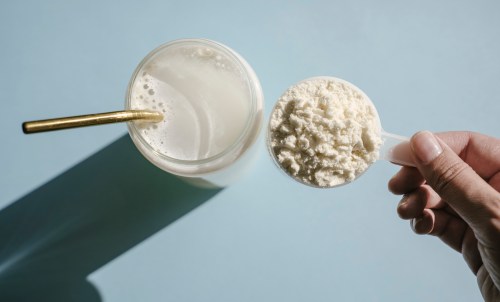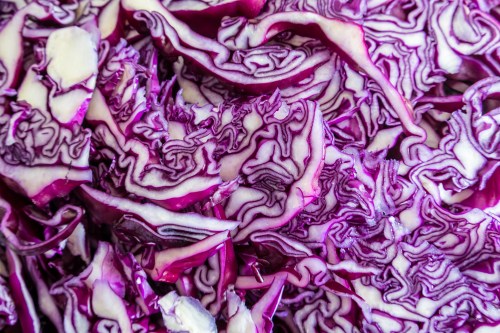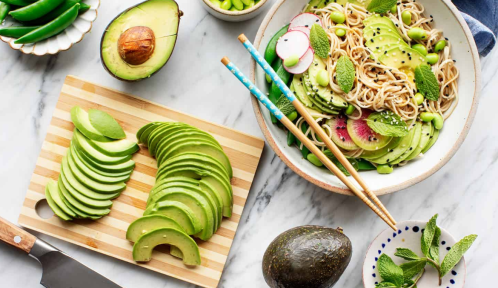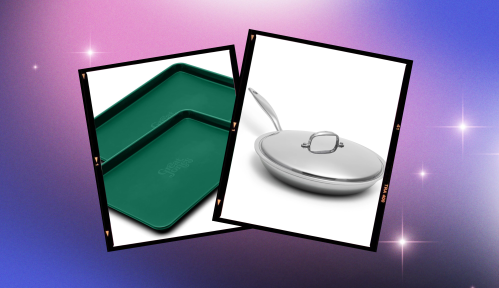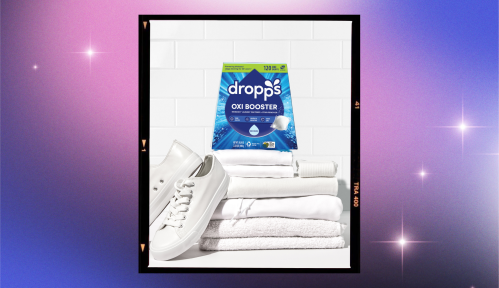If you haven’t experienced candida overgrowth, consider yourself lucky. It occurs when a type of yeast called Candida albicans grows abnormally in the body, causing symptoms such as bloating, fatigue, vaginal infections, and brain fog. One popular solution in combating this overgrowth is through the candida diet, which is said to stave off yeast overgrowth.
Experts in This Article
lead registered dietitian for GutPersonal
microbiome researcher
registered dietitian and author of The Better Period Food Solution.
Finding appealing candida diet recipes can be challenging, thanks to all the different foods that must be eliminated. Sugary sweets and fruits are out. Gluten is gone. Dairy is done. Alcohol? Not a chance. Still, it’s not all bad news, as everything you can eat on the candida diet is beneficial to your health in other ways, too. (Think low-starch veggies, lean animal proteins, and fermented foods.) Plus, there are a number of tried-and-true hacks for creating candida diet snacks and desserts, allowing you to enjoy the treats you love without feeding your fungus.
Below, find a collection of candida diet recipes from top food bloggers (including candida diet recipes for breakfast and candida diet recipes for dinner) that follow all the rules, allowing you to reduce candida overgrowth without feeling like you’re actually on a meal plan. (Nachos, anyone?)
What is the candida diet?
The candida diet is a low-sugar, anti-inflammatory diet that promotes good gut health and eliminates the sugars that feed a candida overgrowth, a type of fungus or yeast that grows all over the body—especially in warm, moist areas on the body. “This diet is often followed by individuals who believe they have an overgrowth of candida in their bodies,” says Jillian Smith, RDN, lead registered dietitian for GutPersonal. “The diet is primarily based on the theory that excess candida in the body can lead to various health issues, and by limiting the consumption of certain foods, it’s possible to control or eliminate the overgrowth.”
The diet includes non-starchy vegetables, some low-sugar fruits, non-glutinous grains, certain dairy products, and fermented foods. Eating this way is meant to improve gut health, reduce inflammation, and boost immunity, meanwhile alleviating candida symptoms like bloating, indigestion, fatigue, nausea, diarrhea, and gas.
Candida diet benefits and risks to be aware of
Is the candida diet healthy? While the scientific evidence backing the effectiveness of the diet as a whole is lacking, some components—like cutting out gluten and alcohol—could have some merit in reducing candida growth. With that being said, more research is needed. “Overall, while it may be beneficial to test out the diet, it shouldn’t be a lifestyle—rather a way to decrease yeast growth for a limited period of time,” Tracy Lockwood Beckerman, RD, a registered dietitian based in New York City, previously told Well+Good. “Gut imbalances are serious business, and everyone who thinks they have one should be working closely with a health professional about what their next step should be before trying the diet.”
According to Smith, the candida diet can have both positive and negative aspects when it comes to your health. Here’s what to keep in mind before trying the anti-fungal diet.
The benefits
1. Reduced symptoms of candida overgrowth
Of course, the main benefit of going on the candida diet is that it could help with candida overgrowth. “Many individuals who follow the candida diet report a reduction in symptoms associated with candida overgrowth, such as digestive issues, yeast infections, and skin problems,” Smith says. “By restricting sugar and yeast-containing foods, they believe they can better control these symptoms.”
2. Gut health support
Aside from helping with candida overgrowth, Smith says the candida diet may also support gut health. “This diet promotes the consumption of probiotics and fermented foods, which can help rebalance the gut microbiome,” she says. “By introducing beneficial bacteria, individuals aim to improve their overall gut health, potentially leading to better digestion and a strengthened immune system.”
3. Supports overall well-being
One accidental benefit of enjoying candida diet recipes for breakfast, or whipping up some candida diet snacks, is that they’re generally made up of “whole, unprocessed foods, such as non-starchy vegetables, lean proteins, and healthy fats,” says Smith. Eating more whole foods can come with numerous benefits, such as glowy skin, a stronger immune system, and improved overall well-being.
The risks
1. Nutrient deficiencies
While there are certainly pros to the candida diet, Smith says its strict regulations could lead to nutrient deficiencies. “It restricts or eliminates various food groups, including fruits, grains, and dairy, which are important sources of essential nutrients like vitamins, minerals, and fiber,” she says. “Prolonged adherence to the diet can lead to nutrient deficiencies, potentially causing health problems.”
2. Difficult to sustain
Because of how many rules you need to follow on the candida diet, it can be very hard to keep up with. “The candida diet can be challenging to sustain over the long-term due to its highly restrictive nature,” Smith says. “It often involves eliminating many common and enjoyable foods, which can lead to boredom and difficulty adhering to the diet.”
3. Potential for unintended consequences
The restrictive nature of the candida diet can also be problematic for other reasons, too: “Strict diets like the candida diet can lead to an unhealthy preoccupation with food, disordered eating patterns, and social isolation due to dietary limitations,” Smith says. “Individuals may develop an unhealthy relationship with food and experience negative psychological effects.” Because of that, anyone who decides to give the candida diet a try needs to be careful that they’re not falling into any of these behaviors.
How can you tell if you need to go on the candida diet?
The candida diet is meant to help individuals dealing with an overgrowth of candida in their bodies—but how the heck are you supposed to know if you’re one of them?
While Mahmoud A. Ghannoum, PhD, says everyone has “off” days where their digestion is out of whack (think bloating, gas, diarrhea, and abdominal pain), it’s when you experience these issues that could be a sign that it’s something more serious. “One telltale sign is that these internal symptoms often hit after you’ve experienced an infectious-like illness, which suggests candida may be a triggering factor,” he previously told Well+Good. He also recommends looking for other physical signs, such as little white spots in your mouth or pain in your esophagus that feels similar to the pain experienced from acid reflux.
A test can also tell you if candida overgrowth is the culprit. Healthcare providers typically take a blood sample, or a sample from the infected body site, which will give you an answer within a few days. You can also purchase an at-home candida test kit.
Foods that kill candida: What you can eat on a candida diet
If you’re looking for foods that kill candida, start plating up some of these options. By eliminating gluten and sugar from your diet—and instead focusing on preparing meals that are packed with plenty of whole foods, non-starchy veggies, and healthy proteins—you could give the fungus the boot.
Here’s the kicker: You don’t have to give up as much as you think on this anti-fungal diet. (You can still use certain sweeteners in candida diet desserts, for example.) So before you start preparing candida diet recipes for dinner and beyond, scroll through these RD-approved staples for your candida cleanse.
Non-starchy vegetables:
- Asparagus
- Broccoli
- Brussels sprouts
- Cabbage
- Cauliflower
- Celery
- Cucumber
- Eggplant
- Garlic (raw)
- Kale
- Onions
- Rutabaga
- Spinach
- Zucchini
Low-sugar fruits:
- Avocado
- Lemon
- Lime
- Olives
- Tomatoes
Non-glutinous grains:
- Buckwheat
- Millet
- Oat bran
- Quinoa
- Teff
Healthy proteins:
- Anchovies
- Chicken
- Eggs
- Herring
- Salmon (wild)
- Sardines
- Turkey
- Tofu
Dairy products:
- Butter
- Ghee
- Kefir
- Yogurt (probiotic)
Low-mold nuts and seeds:
- Almonds
- Coconut
- Flaxseed
- Hazelnuts
- Sunflower seeds
Herbs, spices, condiments:
- Apple cider vinegar
- Basil
- Black pepper
- Cinnamon
- Cloves
- Coconut aminos
- Dill
- Garlic
- Ginger
- Oregano
- Paprika
- Rosemary
- Salt
- Thyme
- Turmeric
Healthy fats and oils:
- Coconut oil (virgin)
- Flax oil
- Olive oil
- Sesame oil
Sweeteners:
- Stevia
- Monk fruit
Fermented foods:
- Kefir
- Olives
- Sauerkraut
- Yogurt
Drinks:
- Chicory coffee
- Herbal tea
- Water
3 key things to avoid on the candida diet
Now that you’ve familiarized yourself with the foods that get a green light on the candida diet, it’s crucial to keep in mind what should be avoided. Any foods that feed candida should be omitted, with the below categories being the most vital to remember as you’re planning out your meals.
1. Avoid foods high in sugar
Sure, you can still enjoy delicious candida diet desserts or candida diet snacks. With that being said, it’s important to avoid foods high in sugar (natural or added), as they can feed the candida overgrowth, exacerbating inflammation and disrupting gut health. This includes sugar and most sugar substitutes, including agave, aspartame, cane sugar, corn syrup, honey, maple syrup, and molasses. Stevia and monk fruit, however, are fine.
2. Avoid foods with gluten
Consuming foods with gluten—like barley, rye, spelt, and wheat—can leave the gut more susceptible to candida overgrowth. While it may be hard to give up those foods in particular, you can utilize non-glutinous grains—such as buckwheat, millet, oat bran, quinoa, and teff—when preparing mouth-watering candida diet recipes for dinner.
3. Avoid foods that can trigger inflammation
Common foods (and drinks) that can trigger inflammation include processed meat, sugar, gluten, alcohol, and foods with trans fats, so you’ll want to avoid those on a candida diet. There are also several other surprising foods that can cause inflammation to be aware of too, including peanuts, seitan, frozen yogurt, and agave.
13 candida diet recipes that boost gut health
Ready to begin your candida cleanse? These candida diet recipes for breakfast, lunch, and dinner are a great place to start. There’s even candida diet desserts, because who doesn’t love ending the day with something sweet?
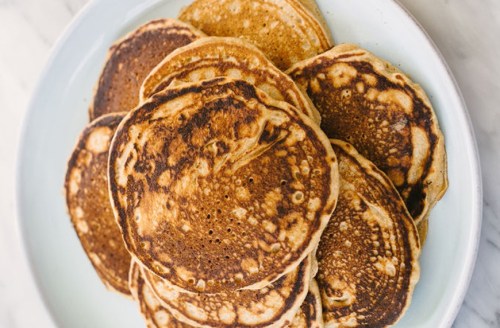
1. Gut-Healing Pancakes
These pancakes work for just about every type of eater—they’re permissible for the candida diet and are also low-FODMAP, Paleo, gluten-free, nut-free, dairy-free, and soy-free. Plus, they manage to sneak in some gut-healthy collagen. To comply with the rules of the anti-fungal diet, top them with almond butter instead of syrup. (But check the ingredient label first to ensure your brand isn’t sneaking in anything suspicious!)
Get the recipe:Gut-Healing Pancakes
2. Carrot Cake Porridge
This recipe mixes oat bran with buckwheat flakes and beta carotene-packed carrots, which are optimal in small quantities.
Get the recipe:Carrot Cake Porridge
3. Mindful Veggie Bowl
Load up on nutrient-dense veggies to boost your immunity, which will help your body stay balanced. Using this recipe as a guideline, add any non-starchy vegetables you love into the mix. (Protein is A-OK, too.)
Get the recipe:Mindful Veggie Bowl
4. Telhami Baba Ganoush
Mix this creamy eggplant spread into a veggie bowl, use it as a dip for cucumber slices, or just eat it with a spoon at snack time—it’s that good.
Get the recipe:Telhami Baba Ganoush
5. Nachos with Rutabaga Chips
Unlike most starchy vegetables, the root veggie rutabaga is approved for those on a candida cleanse thanks to its anti-fungal properties. In this nacho recipe, it replaces traditional corn tortilla chips—a no-no for candida sufferers. You can also make oven-baked rutabaga fries using coconut oil and salt.
Get the recipe:Nachos with Rutabaga Chips
6. Marinated Kale Salad
The apple cider vinegar used in this simple salad recipe is said to be beneficial for gut health. Plus, the pumpkin seeds tossed into this mix are purported to have anti-fungal properties, too.
Get the recipe:Marinated Kale Salad
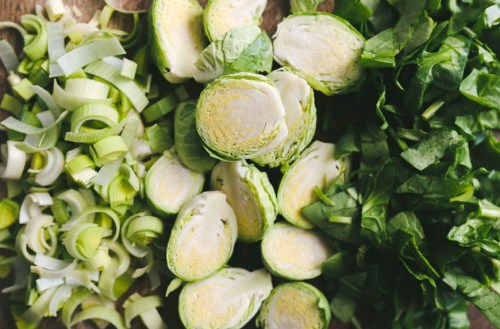
7. Buckwheat and Brussels Sprout Salad
Cruciferous vegetables, including Brussels sprouts, are said to have anti-fungal properties. In this recipe, they’re mixed with buckwheat in a super-filling salad that can be eaten hot or cold.
Get the recipe:Buckwheat and Brussels Sprout Salad
8. Sesame Salmon Burgers
This salmon burger recipe is so flavorful that you won’t even miss the bread. But if you happen to be craving a carb, whip up these caraway seed buns or serve alongside rutabaga fries.
Get the recipe:Sesame Salmon Burgers
9. Roasted Radishes
The list of radish benefits goes on and on, but they’re especially great for those on a candida diet due to being a natural anti-fungal.
Get the recipe:Roasted Radishes
10. Kimchi Meatballs
Fermented foods like kimchi offer big benefits—probiotics!—to candida sufferers. Here, fermented cabbage adds flavor to standard meatballs, which can be served with a side of probiotic-packed plain yogurt.
Get the recipe:Kimchi Meatballs
11. Green Chili Chicken Stew
On sick days, cold days, or pretty much any day, few things can beat a steaming bowl of chicken soup. Luckily most versions, including this stew, are candida diet-friendly. You can also go for this meatless version if you’re doing the candida diet as a vegetarian—it’s made with cauliflower taco meat instead.
Get the recipe:Green Chili Chicken Stew
12. Shamrock Shake
Sometimes on a no-sugar diet, all you want to do is hit up a drive-thru and slurp down a frosty shake. Dupes can help take the edge off—this one utilizes avocado, spinach, coconut milk, cucumber, and fresh mint in place of sugar, dairy, and more sugar.
Get the recipe:Shamrock Shake
13. Cinnamon Cookies
Cookies and candida generally don’t mix, but this kind utilizes anti-fungal xylitol as a sweetener instead of sugar. Its use of anti-inflammatory cinnamon is a wellness bonus, too. Candida caveat: Make sure your vanilla extract doesn’t have added sugar in it—believe it or not, some do.
Get the recipe:Cinnamon Cookies
7-day candida diet meal plan
Day 1
Breakfast: Gluten-free, low-sugar protein pancakes with strawberriesLunch: Chicken saladDinner: Quinoa stuffed bell peppers
Day 2
Breakfast: Avocado toast on gluten-free breadLunch: Kale salad lemon vinaigretteDinner: Grilled salmon with roasted brussels sprouts
Day 3
Breakfast: Spinach and egg bitesLunch: Spinach and artichoke salad with cherry tomatoesDinner: Grilled chicken and broccoli
Day 4
Breakfast: Blackberry avocado smoothieLunch: Creamy egg saladDinner: Ground turkey-stuffed zucchini boats
Day 5
Breakfast: Omelet with tomato salsaLunch: Chicken noodle soup with gluten-free pastaDinner: Baked cod with olive tapenade
Day 6
Breakfast: Berry chia puddingLunch: Curried cauliflower soupDinner: Lemon chicken with asparagus
Day 7
Breakfast: Yogurt parfaitLunch: Chicken and zucchini noodle saladDinner: Turkey meatballs with green beans
Frequently asked questions about the candida diet
How long does it take to starve candida?
According to Smith, the timeline for getting rid of candida overgrowth through a candida diet can vary significantly from person to person. “Some people may experience significant relief from symptoms within a few weeks, while others may take several months to see substantial improvements,” she says. She also notes that several factors can influence the duration it takes to see improvements or relief from candida-related symptoms. Those factors include the severity of candida overgrowth and someone’s adherence to the diet (aka sticking to foods that kill candida vs eating those that feed the overgrowth).
Can I have bananas on a candida diet?
Typically, bananas are on the list of foods to avoid on the candida diet due to their high-sugar content. “While bananas have a lower sugar content compared to some fruits, they still contain natural sugars, including fructose and glucose,” Smith says. “For individuals with severe candida overgrowth or high sensitivity to sugars, even the natural sugars in bananas might be problematic, as candida can feed on sugars.”
Bananas also contain starch, which Smith says can break down into sugars in the body. With that being said, there are plenty of benefits to eating bananas (hello potassium, dietary fiber, and vitamins and minerals!) and the response varies from person to person. “Some individuals may find that consuming bananas exacerbates their candida-related symptoms, while others may tolerate them well,” she says.
Are potatoes OK for the candida diet?
Typically, potatoes—along with other starchy vegetables—are on the list of foods to avoid on a candida diet. “Potatoes are starchy, and their starch can be broken down into sugars in the body,” Smith says. “For some individuals with candida overgrowth or those following strict candida diets, starches might be restricted, as they can potentially feed the yeast.”
Smith says there are plenty of perks to eating potatoes (they’re a great source of vitamin C and B, as well as minerals like potassium and magnesium), so it’s understandable why you may want to give them a try. Just be aware that doing so could exacerbate any issues you’re dealing with due to candida overgrowth: “Some people may find that even the moderate starch content in potatoes worsens their candida-related symptoms, such as digestive issues or sugar cravings,” she says.
Can a candida diet reduce your risk of yeast infections?
Those who support the candida diet claim that it can help reduce the risk of yeast infections. But according to Smith, it’s still a topic of debate and isn’t widely supported by scientific evidence. “While proponents of the candida diet suggest that it can help reduce the occurrence of yeast infections, other factors must also be considered,” she says. “Yeast infections are caused by an overgrowth of candida in the body. However, multiple factors can contribute to the development of yeast infections, including hormonal changes, antibiotics, weakened immune system, and underlying medical conditions.” Because of this, she says the role of diet in preventing yeast infections is complex and may only be one piece to the puzzle.
Can I go on the candida diet as a vegetarian?
A candida diet for vegetarians is easier than you think. While some plant-based foods (think starchy veggies and certain grains) are a no-go due to feeding candida, and animal-based proteins are off the table, there are still plenty of options. You have access to a long list of non-starchy veggies, low-sugar fruits (avocado, included!), non-glutinous grains (like buckwheat and quinoa), and healthy proteins (like eggs and tofu) to build meals from.
Sign Up for Our Daily Newsletter
Get all the latest in wellness, trends, food, fitness, beauty, and more delivered right to your inbox.
Got it, you've been added to our email list.



